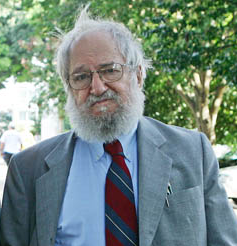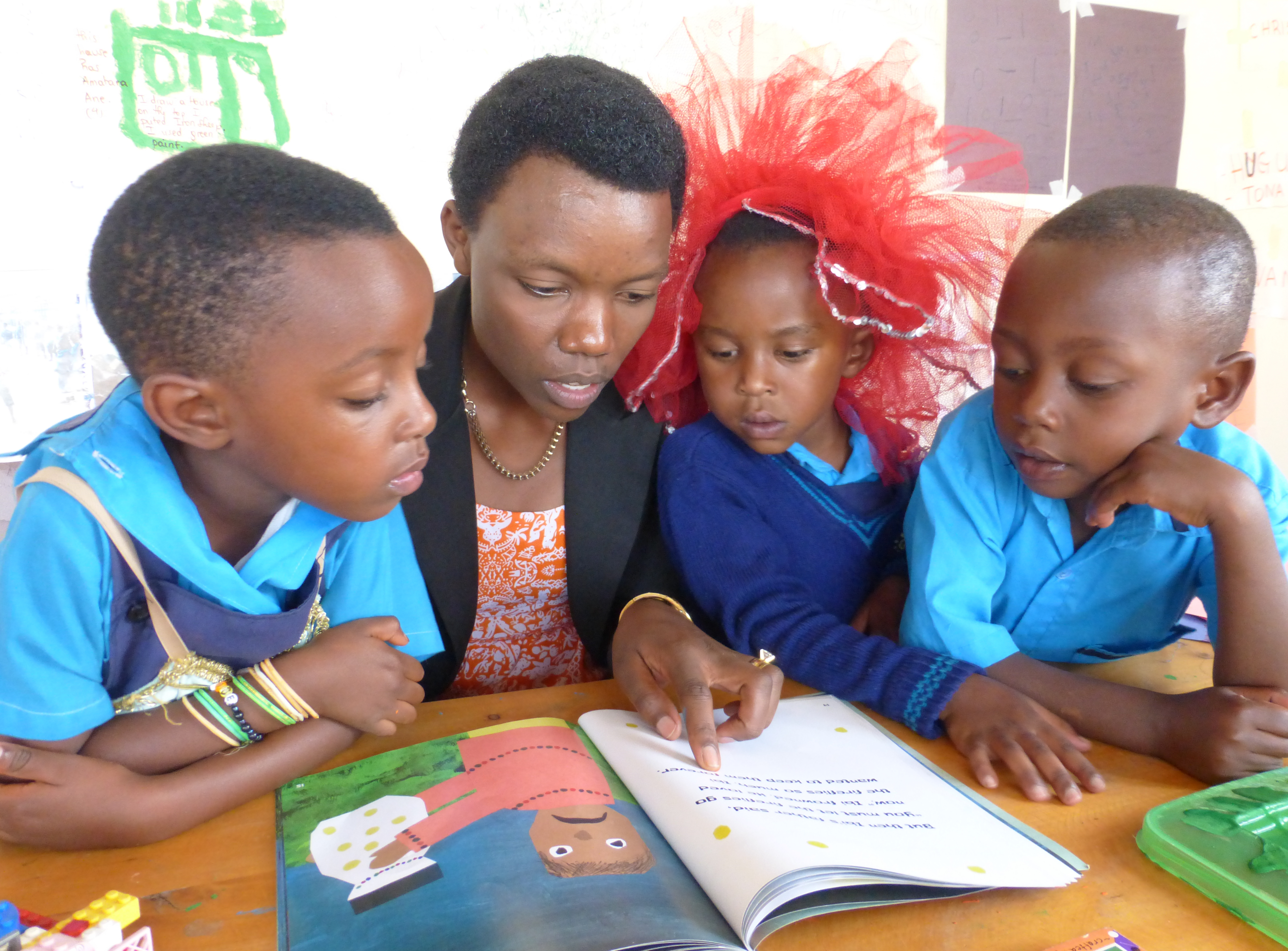|
Scripted Teaching
Scripted teaching or scripted instruction refers to commercial reading programs that have highly structured lessons, often with specific time allotments for teaching specific skills, and often word-for-word scripts of what the teacher is to say. Scripted instruction has often been advocated for schools where teachers have had inadequate teacher training and is also seen as way to standardize the quality of instruction. Critics say that such programs stifle teachers' creativity, undermine teachers' expertise, and fail to provide for the diverse needs of many classrooms. Advocates see it as the easiest way to provide teachers with the essential elements of effective reading instruction. Scripted instruction has also been applied to preparation of lessons in many other subject matter areas. One widely used program using scripts is the Success for All reading instruction program. Scripted instruction has been an integral part of the direct instruction (DI) approach to education which ha ... [...More Info...] [...Related Items...] OR: [Wikipedia] [Google] [Baidu] |
Success For All
Success for All (SFA) are standards-based Comprehensive School Reform curricula for early childhood through middle school, produced by the nonprofit organization Success for All Foundation (SFAF) of Baltimore, Maryland, USA. Psychologist Robert Slavin of Johns Hopkins University founded SFAF along with his wife and research collaborator, Nancy Madden. The SFA and its evidence-based school improvement strategy continue to help improve literacy levels and general education in the US, particularly for children in disadvantaged circumstances. In 2010, Success for All received a nearly $50 million grant from the U.S. Department of Education. Improvement strategy Elements of the SFA school system include: structured teaching of reading (an early leader in phonics teaching); social and emotional development; cooperative learning and oracy; teaching at the right level and providing catch up tutoring for children who are behind. Tutoring with the Lightning Squad is the SFA tutoring progr ... [...More Info...] [...Related Items...] OR: [Wikipedia] [Google] [Baidu] |
Direct Instruction
Direct Instruction (DI) is a term for the explicit teaching of a skill-set using lectures or demonstrations of the material to students. A particular subset of direct instruction, denoted by capitalization as Direct Instruction, refers to a specific example of the approach developed by Siegfried Engelmann and Wesley C. Becker. DI teaches by explicit instruction, Explicit Instruction. LearnLab. Pittsburgh Science of Learning Center. Retrieved 2017-06-12. in contrast to exploratory models such as . DI includes s, participatory laboratory classes, [...More Info...] [...Related Items...] OR: [Wikipedia] [Google] [Baidu] |
Constructionism (learning Theory)
Constructionist learning is the creation by learners of mental models to understand the world around them. Constructionism advocates student-centered, discovery learning where students use what they already know, to acquire more knowledge.Alesandrini, K. & Larson, L. (2002). Teachers bridge to constructivism. The Clearing House, 119–121. Students learn through participation in project-based learning where they make connections between different ideas and areas of knowledge facilitated by the teacher through coaching rather than using lectures or step-by-step guidance. Further, constructionism holds that learning can happen most effectively when people are active in making tangible objects in the real world. In this sense, constructionism is connected with experiential learning and builds on Jean Piaget's epistemological theory of constructivism. Seymour Papert defined constructionism in a proposal to the National Science Foundation titled ''Constructionism: A New Opportunit ... [...More Info...] [...Related Items...] OR: [Wikipedia] [Google] [Baidu] |
Discovery Learning
Discovery learning is a technique of inquiry-based learning and is considered a constructivist based approach to education. It is also referred to as problem-based learning, experiential learning and 21st century learning. It is supported by the work of learning theorists and psychologists Jean Piaget, Jerome Bruner, and Seymour Papert. Jerome Bruner is often credited with originating discovery learning in the 1960s, but his ideas are very similar to those of earlier writers such as John Dewey. Bruner argues that "Practice in discovering for oneself teaches one to acquire information in a way that makes that information more readily viable in problem solving". This philosophy later became the discovery learning movement of the 1960s. The mantra of this philosophical movement suggests that people should "learn by doing". The label of discovery learning can cover a variety of instructional techniques. According to a meta-analytic review conducted by Alfieri, Brooks, Aldrich, and ... [...More Info...] [...Related Items...] OR: [Wikipedia] [Google] [Baidu] |
International Reading Association
The International Literacy Association (ILA), formerly the International Reading Association (IRA), is an international global advocacy and member professional organization that was created in 1956 to improve reading instruction, facilitate dialogue about research on reading, and encourage the habit of reading across the globe. The organization is headquartered in Newark, Delaware, United States, with a network of more than 300,000 literacy educators, researchers, and experts across 128 countries, and more than 1,250 councils and affiliates worldwide. Membership fees range from US$39 to US$44, plus costs for optional journal subscriptions. Discounted subscription rates are available for residents of developing economies. The current ILA President of the Board iDr. Kenneth Kunz Publishing ILA officially ended its book publishing program on June 30, 2018. However, the Association continues to publish journals, its membership magazine, literacy briefs, and other literacy-focused te ... [...More Info...] [...Related Items...] OR: [Wikipedia] [Google] [Baidu] |
Standards-based Education
Outcome-based education or outcomes-based education (OBE) is an educational theory that bases each part of an educational system around goals (outcomes). By the end of the educational experience, each student should have achieved the goal. There is no single specified style of teaching or assessment in OBE; instead, classes, opportunities, and assessments should all help students achieve the specified outcomes. The role of the faculty adapts into instructor, trainer, facilitator, and/or mentor based on the outcomes targeted. Outcome-based methods have been adopted in education systems around the world, at multiple levels. Australia and South Africa adopted OBE policies from the 1990s to the mid 2000s, but were abandoned in the face of substantial community opposition. The United States has had an OBE program in place since 1994 that has been adapted over the years. In 2005, Hong Kong adopted an outcome-based approach for its universities. Malaysia implemented OBE in all of their ... [...More Info...] [...Related Items...] OR: [Wikipedia] [Google] [Baidu] |
Phonics Curricula
Phonics is a method for teaching people how to read and write an alphabetic language (such as English, Arabic or Russian). It is done by demonstrating the relationship between the sounds of the spoken language (phonemes), and the letters or groups of letters (graphemes) or syllables of the written language. In English, this is also known as the alphabetic principle or the ''Alphabetic code''. Phonics is taught using a variety of approaches, for example: a) learning ''individual'' sounds and their corresponding letters (e.g. the word cat has three letters and three sounds c - a - t, (in IPA: , , ), whereas the word flower has six letters but four sounds: f - l - ow - er, (IPA , , , ), or b) learning the sounds of letters or groups of letters, at the word level, such as similar sounds (e.g., cat, can, call), or rimes (e.g., hat, mat and sat have the same rime, "at"), or consonant blends (also consonant clusters in linguistics) (e.g. bl as in black and st as in last), or syll ... [...More Info...] [...Related Items...] OR: [Wikipedia] [Google] [Baidu] |


